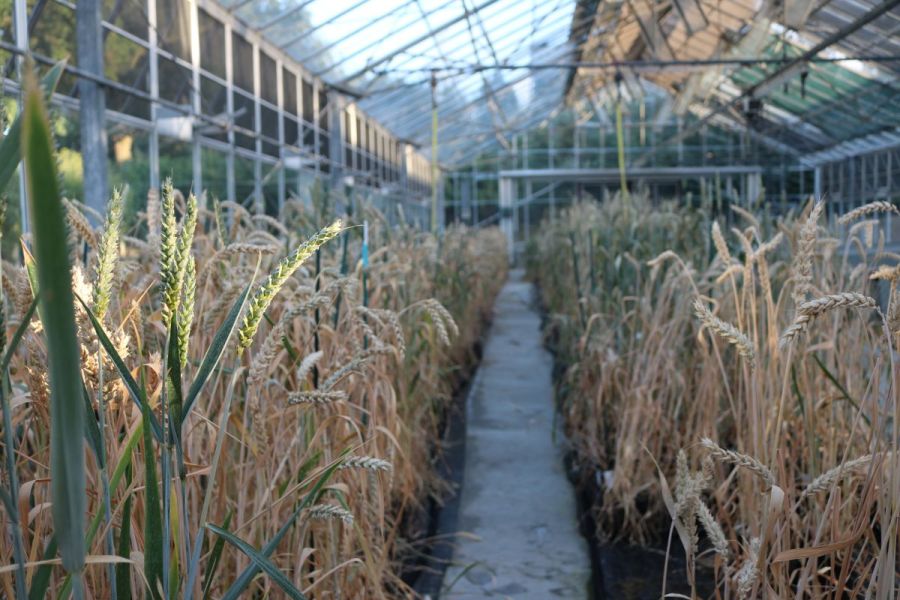As the Genetic Technology Bill made its way through Parliament, plant breeders and innovators met to discuss other paths to a sustainable future. CPM summarises the discussion and the content of the new Bill.
“What we want is the marriage of farmer-led innovation and digital analytics.”
By Tom Allen-Stevens
Diversity. Whether in the lab or the field, organic or precision-bred, nursery to row-crop, those from pre-breeding research through to the customer interface seem to agree that a wider genetic base will bring more resilience, productivity and a healthier future for crop production.
But there are diverse views on how to achieve it, with new precision-breeding technologies representing an ever-growing, ever-present elephant in the room whenever plant breeding’s future is discussed. In a bid to explore diversity without being divisive, CHAP and the Soil Association clocked the elephant and manoeuvred it to one side at the Plant Breeding Fit for the Future conference they jointly hosted in Birmingham recently.

Farming systems that encourage diversity have a critical role to play, said Jo Lewis.
“Resilience in plant breeding does come from new traits, but it’s more about genetic diversity,” said SA’s policy and strategy director Jo Lewis. “Farming systems that encourage this have a critical role to play, not a marginal one, but they’re starved of investment.”
Dr Ruth Bastow, innovation director at CHAP, noted that plant breeding’s role is underplayed, despite the fact it underpins the entire food system human society depends on. “‘Just three crops – wheat, rice and maize – make up over 50% of the world’s calorie intake. Diversity of the food we eat and the systems that produce it will be our strength in the future.”
The conference started with perhaps the most doom-laden outlook ever presented to an agricultural audience by Prof Tim Benton, research director at Chatham House. “The only thing we can be certain about is that the future is uncertain,” he said.
Tim sees the world as TUNA – turbulent, uncertain, novel and ambiguous – and set about explaining why. A series of charts of various metrics did the job, with everything from inflationary pressures to economic growth either soaring to eye-watering highs or plunging into the abyss, depending on which you want to get more depressed about.
“Farmers will want to hedge against these risks,” he concluded, “so should plant breeders be looking for different targets?”
Paul Gosling championed the role of the AHDB Recommended Lists in making ‘the grade’, pointing out they’re a good “starting point” for growers. “The challenge is to stay relevant with diversifying production systems. Everyone wants trials for their own system, but we simply don’t have enough trials.”
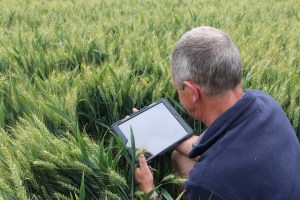
There are vast and varied datasets that can be analysed against an increasing array of on-farm data.
Digital was highlighted in the discussion that followed and heralded the second D of the day. “Is there a role for big data?” asked Dr Bruce Pearce of Garden Organic, noting the vast and varied datasets that services, such as the RL, produce that can be analysed against an increasing array of on-farm data.
“There’s so much knowledge, it’s a question of centralising that, which will help farmers understand what works in their own system,” noted Jen Bromley of Vertical Future.
Paul suggested growers “take the RL as a starting point and trial varieties in their own farming system.”
While this may help incremental change, enabling plant-breeding for the future has a more fundamental barrier, highlighted by Bruce: “We’re trying to turn a tanker in a canal – there’s a lot of conservatism in the industry,” he said.
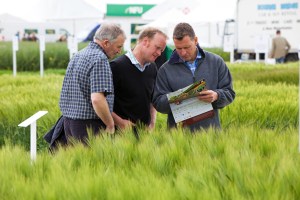
There simply aren’t enough trials for everyone, so growers should use the RL as a starting point and trial varieties in their own farming system.
This was a point picked up by Liz Bowles of the Farm Carbon Toolkit. “But do we know the direction it should go? If we can’t decide, it’ll be very difficult to turn it.”
Liz illustrated the need for change by pointing out that 40% of arable farming’s greenhouse gas emissions stem from its use of synthetic fertilisers. “We have a system that incentivises varieties that respond to fertiliser, and not those that grow their roots.”
Questions were raised over how the UK’s Plant Variety Rights (PVR) system can be improved to increase diversity. “It’s a system that very successfully increases choice to growers,” responded Sam Brooke of the British Society of Plant Breeders.
“It’s worth noting that where there is a good system, like PVR, we see more open-pollinated varieties, while where there is not, breeders tend to invest more in hybrids to protect their intellectual property. But there’s a lot of data that sits behind PVR and perhaps we should be making more of that – we have the right tools to make it work better for us.”
Prof Tom MacMillan of the Centre for Effective Innovation in Agriculture looked in more detail at how research and innovation could be done better. He highlighted the UK’s low total factor productivity (TFP) growth for agriculture, against a relatively high public expenditure. “In the OECD, only Belgium spends more and has less innovation to show for it. There is an innovation gap – the research investment isn’t relevant enough to what farmers actually do.”
Tom, who founded Innovative Farmers during his time with the Soil Association, believes greater farmer involvement is the key to better alignment. “What we want is the marriage of farmer-led innovation and digital analytics. Researchers often dumb down their methods when they work with farmers. We should be doing the opposite, stepping up to answer the complex, real-world questions that matter on the ground.”
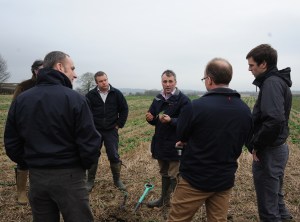
Farmer groups should be stepping up to help researchers answer the complex, real-world questions that matter on the ground.
He introduced the third D of the day – decentralisation. “We have this dream where researchers, farmers and everyone team up more effectively – a kind of big tent. Whereas the way it works at the moment is more like after a music festival, with lots of little tents strewn about the place. So it’s encouraging to see Defra and UKRI’s Farming Innovation Programme recognise the value of farmer-led research. But the devil’s in the detail – we should take care how risk is shared against who gets the rewards.”
Liz noted the potential value of farmers’ data to enrich research projects and provide a good, sound grounding from which to test innovations. “Experience with Innovative Farmers shows that arable farmers often have more sophisticated ways to measure yield effects than some researchers. So farmers have a lot more to bring to the table than perhaps they’re given credit for.”
Prof Katherine Denby of the University of York noted plant breeding doesn’t necessarily need more public funding, just better targeting of existing resources. “We have long projects that take at least five years to get results, which don’t suit the three-year model of a typical public-funded programme. But work may only be carried out in certain months of the year.”
Summarising the elements that make plant-breeding fit for the future, Jo added a fourth D – derisking. “Diversity remains key, and it’s a way to hedge. We must decentralise, making research more participatory and farmer-led to make it relevant. And we must harness digital to manage the complexity of that challenge in a cost-effective way.”
But the industry battles against short-termism and inconsistency, both in policy and funding, she noted. “We can’t wait for our leaders to lead. Collaboration and co-development show the way ahead.”
Genetic Technology Bill opens route for gene-edited crops
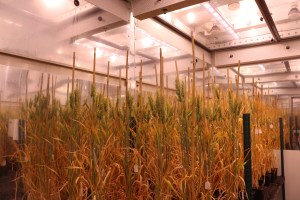
The new Bill classes plants as a PBO if any feature of their genome has been altered with modern biotechnology but where this could have happened naturally.
Legislation currently passing through Parliament will pave the way to allowing the commercial release and marketing of gene-edited crops and animals in England. The Genetic Technology (Precision Breeding) Bill has a new definition for a precision bred organism (PBO) that will no longer come under the tight restrictions required for a genetically modified organism (GMO).
Under the new legislation, plants and animals will qualify as PBOs if:
- any feature of their genome has come from modern biotechnology, which covers all organisms previously classed as GMOs, and
- every feature altered is stable, and
- every feature of their genome could have resulted from traditional breeding or natural transformation.
“We’re very keen to ensure that transgenes are removed from plants marketed as PBOs, and organisms formed through cisgenesis will not be classed as PBOs,” said Louise Ball, GMO science and regulation adviser at Defra, speaking at the BSPB AGM.
“But legislation for GM is not in a good place. So the intention is to carve out PBOs first then look at how to better regulate other GMOs.”
The Bill won’t drop the regulation on PBOs completely – there’s still a requirement to notify the Defra Secretary of State, provide evidence that it qualifies as a PBO, and this information is then held in a register. There will be requirements for traceability.
Two distinct notification systems will be introduced: firstly for material going into field trials for research purposes only, not currently intended for commercialisation. These were relaxed earlier this year, allowing gene-edited crop trials to take place without the GM restrictions that most research organisations found prohibitively expensive.
The second form of notification will be for crops destined for commercialisation. “The key difference is that any transgenic material must be removed from PBOs that will be sold on the open market,” said Louise.
Extra authorisations will be required for precision-bred animals to ensure genetic changes haven’t caused differences that may result in welfare issues. And new powers in the Bill will come in to regulate food and animal feed derived from PBOs.
“The new Bill only applies to England, and devolved administrations haven’t yet made any changes to how GMOs are released to the environment. But it covers the UK internal market, so authorised PBO crops grown in England can be sold in Scotland, Wales and Northern Ireland,” noted Louise.
Scientists, such as director of the John Innes Centre, Prof Graham Moore, have generally welcomed the new legislation. “It will allow us to help UK farmers grow higher yielding, more resilient crops, and provide consumers with food that is healthier for them and the environment.”
NFU deputy president Tom Bradshaw noted the new Bill should ensure public confidence, enable diverse and accessible innovation, and allow investment in products for the UK market. “We know gene editing is not a silver bullet. But if we are to make this a success, any new government regulation must be robust, fit for purpose and based on sound science.”
But the Soil Association is among organisations opposed. “History has proven that GM only benefits a minority of big businesses with a major rise in controlling crop patents and unwelcome, profitable traits such as herbicide-resistant weeds,” says Jo Lewis.
“The Bill must also establish clear safeguards for farmers, including organic farmers, and citizens who choose non-GM to ensure protection from cross-contamination.”
GMO or PBO?
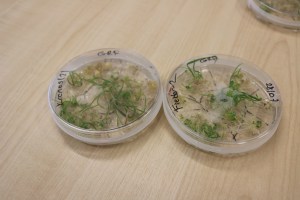
A genetically edited plant must contain no foreign transgene to be classed as a PBO.
Any process that involves the introduction of foreign DNA or RNA classes the resulting product as GMO. But there are a number of ways through which a plant can undergo a genetic change:
Transgenesis is where DNA from another species has successfully been combined into the genome of the host plant. This confers a new trait, such as herbicide tolerance or longer shelf life. These organisms are universally classified as GMOs.
Cisgenesis is where DNA is artificially transferred between organisms of the same species, such as from a wild relative to an elite potato variety to confer blight resistance. In Europe and the UK at least, this is still classified as GMO.
Mutagenesis is a change or edit in the plant genome that confers a new trait. Such mutations occur naturally every day, when a plant comes under stress, for example, or it can be induced through human intervention. A small change in the genome may switch off the activity of a particular gene which allows or inhibits a property, and it’s these phenotypical changes breeders have sought out for generations to progress their lines.
For decades, scientists have induced mutagenesis to bring about new traits, using chemicals or radiation, and the Clearfield trait is an example. This is classified as traditional – neither GMO nor PBO.
More recently, though, more precise gene-editing techniques such as CRISPR-Cas9 have been introduced. CRISPRs are short RNA sequences introduced into the host plant that recognise a specific stretch of genetic code. Cas9 enzymes partner these sequences and cut the host DNA at specific locations.
The cell tries to repair the damage, and that’s when the mutation occurs. By using different enzymes and techniques, researchers can deactivate or alter – edit – specific parts of the genome, thereby conferring traits.
It’s this technique that previously resulted in an organism classed as a GMO, specifically because foreign RNA is introduced to make the edit. But this transgene is usually crossed out in the next generation. So organisms edited by CRISPR and free of any foreign RNA will now be classed as PBOs.
This article was taken from the latest issue of CPM. For more articles like this, subscribe here.

